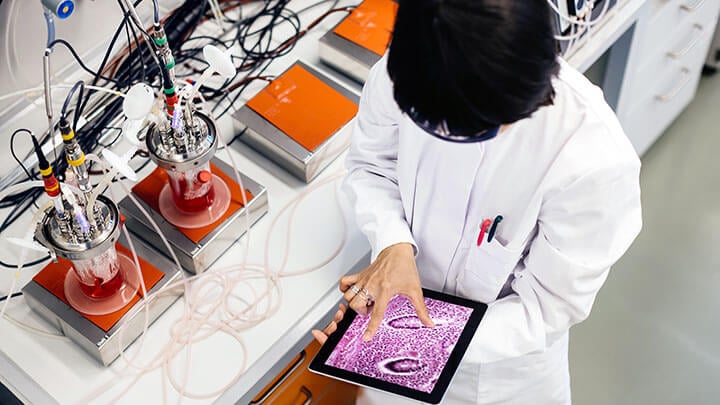Raman spectroscopy laboratory analysis for samples such as proteins, polymers, pharmaceuticals, inorganics, minerals and more
Intertek laboratories provide Raman spectroscopy analytical expertise to industry, research and other clients.
Raman measures the interaction of light with matter. Laser light is used as the source, and causes the atoms in molecules to vibrate. Analysing the scattered light provides a 'fingerprint' and reveals information about chemical structure and physical state of samples. Confocal Raman microscopy is available in Intertek laboratories in the USA and Europe.
Raman applications include measuring molecular and crystallographic orientation. Samples analyzed by Raman spectroscopy include proteins, polymers, pharmaceuticals, inorganics, minerals and other sample types. Solids, liquids, solutions and gases are analyzed with confidence. Real-time Raman spectroscopy allows reactions to be followed in the laboratory or on-line at production sites.
Raman spectroscopy techniques:
- Wide range of dispersive Raman Spectrometers
- 488 nm, 532 nm, 633 nm and 785 nm laser excitation
- Portable or lab based
- Macro or microscopic analysis
- Variable temperature studies
- Polarisation analysis for measuring molecular orientation
- Raman Microscopy and Mapping:
- Confocal Raman microscopy with 633 HeNe and 785 nm diode laser excitation
- Non-destructive depth profiling
- Analysis of microscopic samples or regions of a sample down to 1 um3
- Automated spectral mapping with motorised stage, yielding chemical images with 1 um3 spatial resolution
- Mapping and imaging of chemical composition, crystallinity, orientation, strain, additive migration, etc.
- Coating characterisation, cure, stratification, uniformity, etc.
- Process, In-situ Raman Analysis:
- Reaction and reactor monitoring in the lab and at the production line
- Fibre-coupled dispersive Raman instrumentation
- Analysis of solids, liquids, solutions
- Batch or continuous reactions
- DSC-Raman:
- Differential Scanning Calorimetry with Raman analysis
- Additional Raman and vibrational spectroscopy resources:
- Vibrational Spectroscopy Analysis
- DRIFT NIR/MID Diffuse Reflectance Infrared Fourier Transform Spectroscopy (DRIFTS)
- FTIR Analysis Infra-red Spectroscopy
Contact our experts to discuss your needs and expectations, delivered from our state of the art laboratories across the globe.
Case Study: Raman micro-spectroscopy applied to image polymer phase distributions in an aerosspace carbon-fibre composite
Intertek's Vibrational Spectroscopy unit is continually developing ways to use RAMAN and other vibrational spectroscopy techniques to better understand and improve the structure and properties of materials. Our scientists use infrared and Raman spectroscopy to understand our customer's materials - are they performing in the way they need to, and if not, why not?
A recent example of front-end R&D was the development of Raman micro-spectroscopy technique that could image polymer phase distributions in a carbon-fibre composite used for aerospace applications. With this tool we helped our customer optimise their production process to give the desired phase structure: something that no one else could even measure, let alone control.
Case Study: Distribution of actives in a pharmaceutical tablet
We have also used this imaging approach to help pharmaceutical companies to investigate the structure of tabletted formulations, where its very important to visualise the distribution of actives, excipients and coatings. This insights from the visualisation helped the client to adjust process controls to achieve the desired distribution of the various components.
Case Study: Cure profiles for paints and coatings
We have worked with paints and packaging companies to image cure profiles in coatings, thereby improving scratch resistance and adhesion properties.


